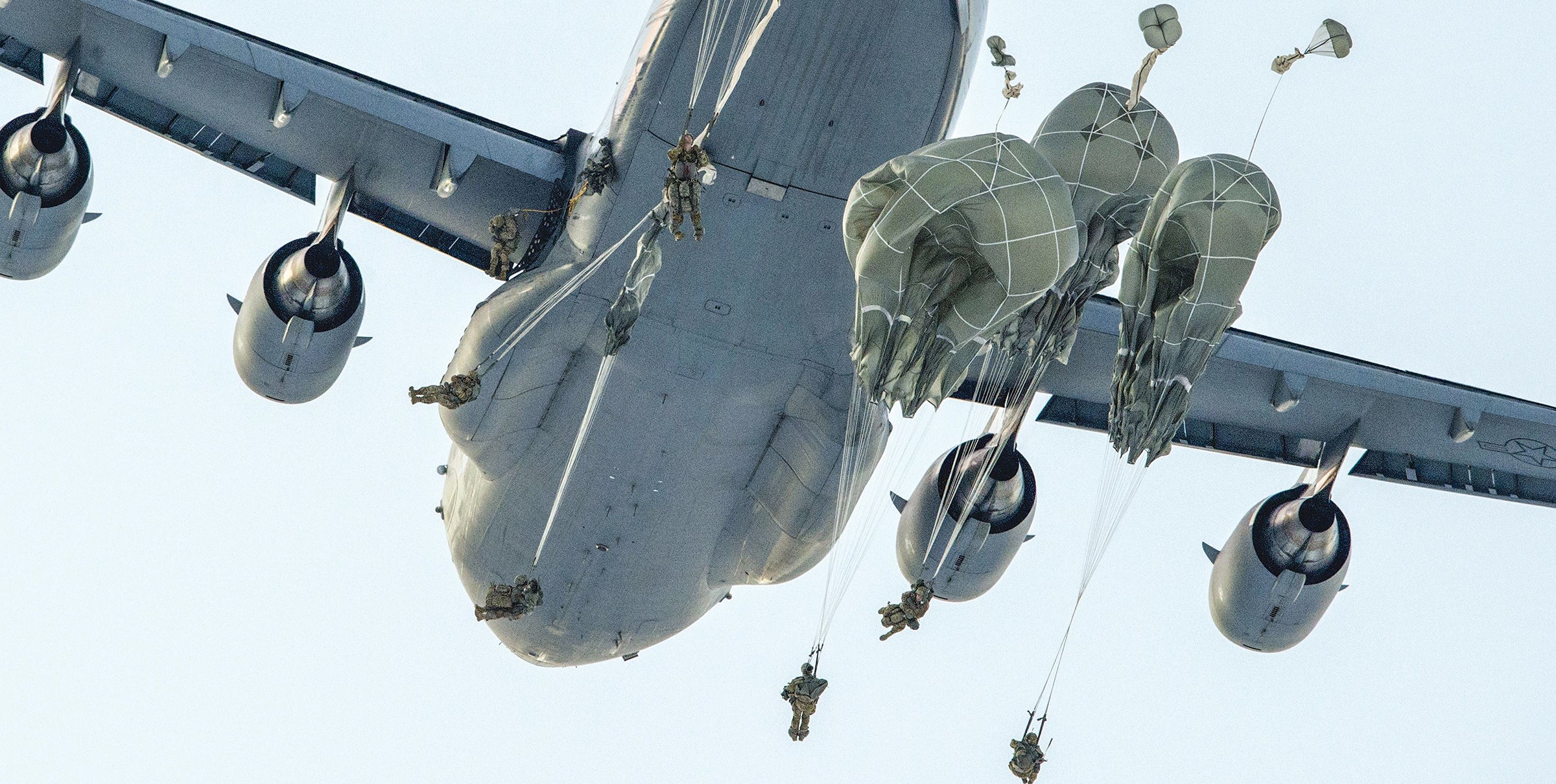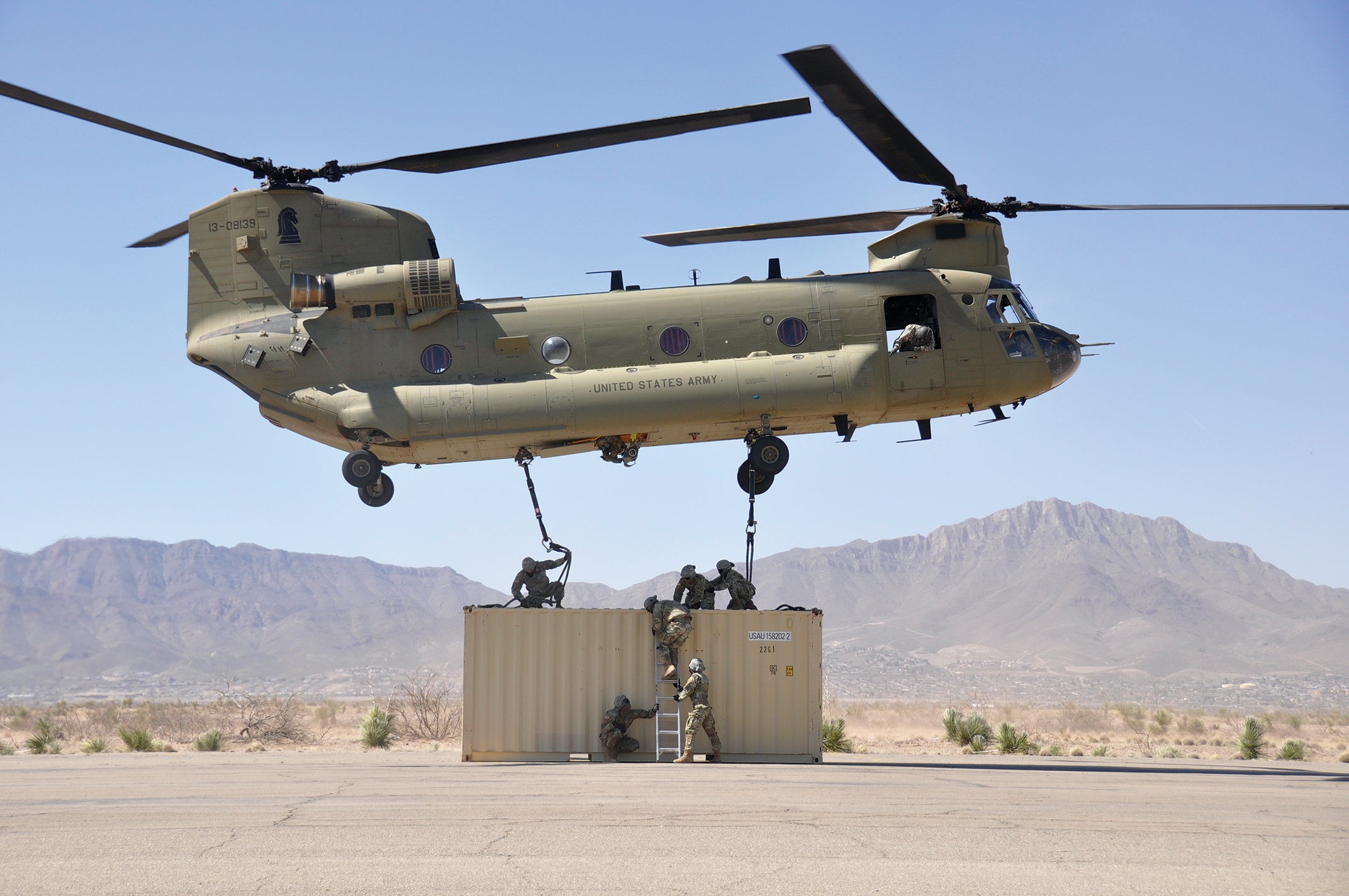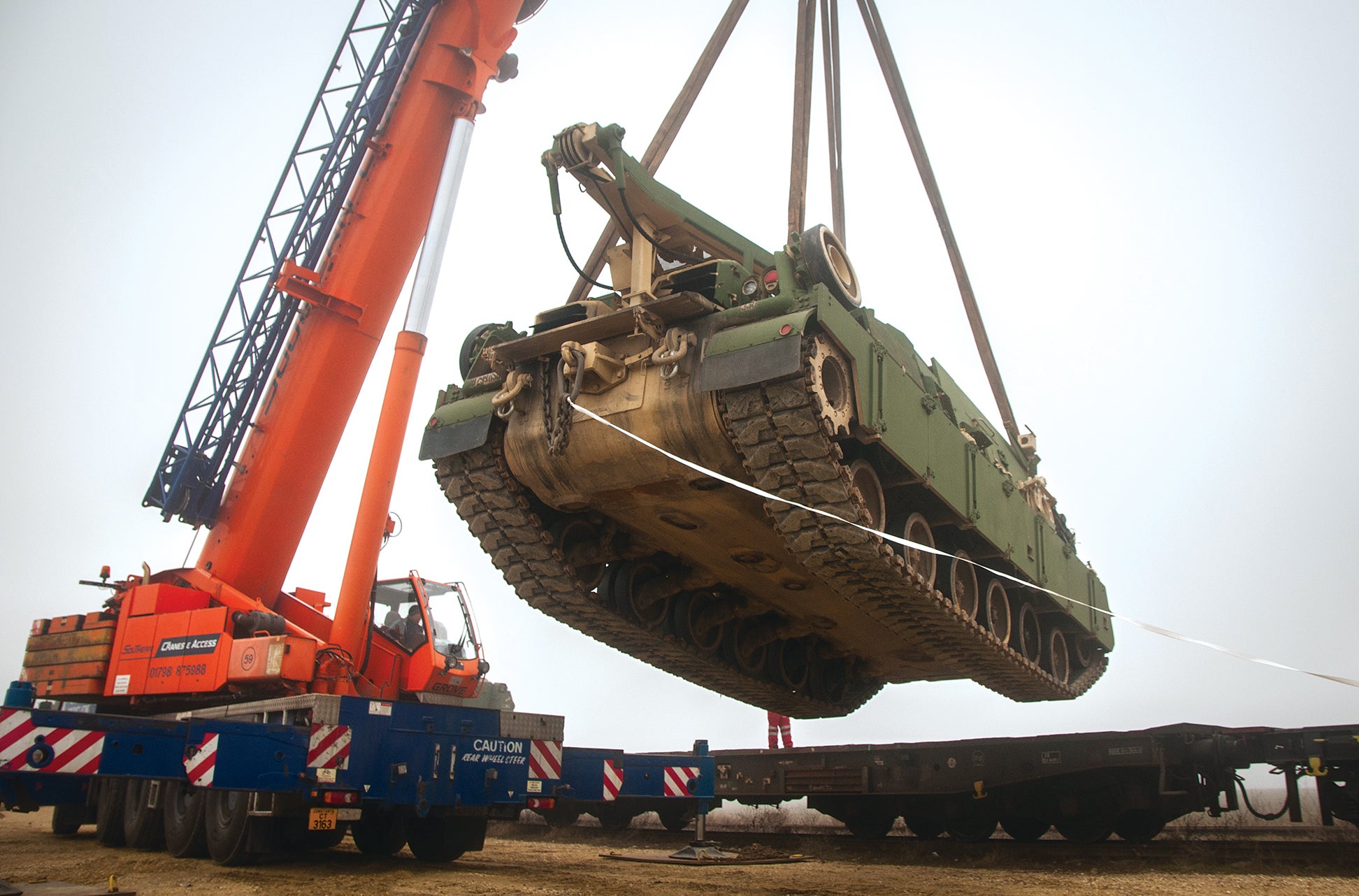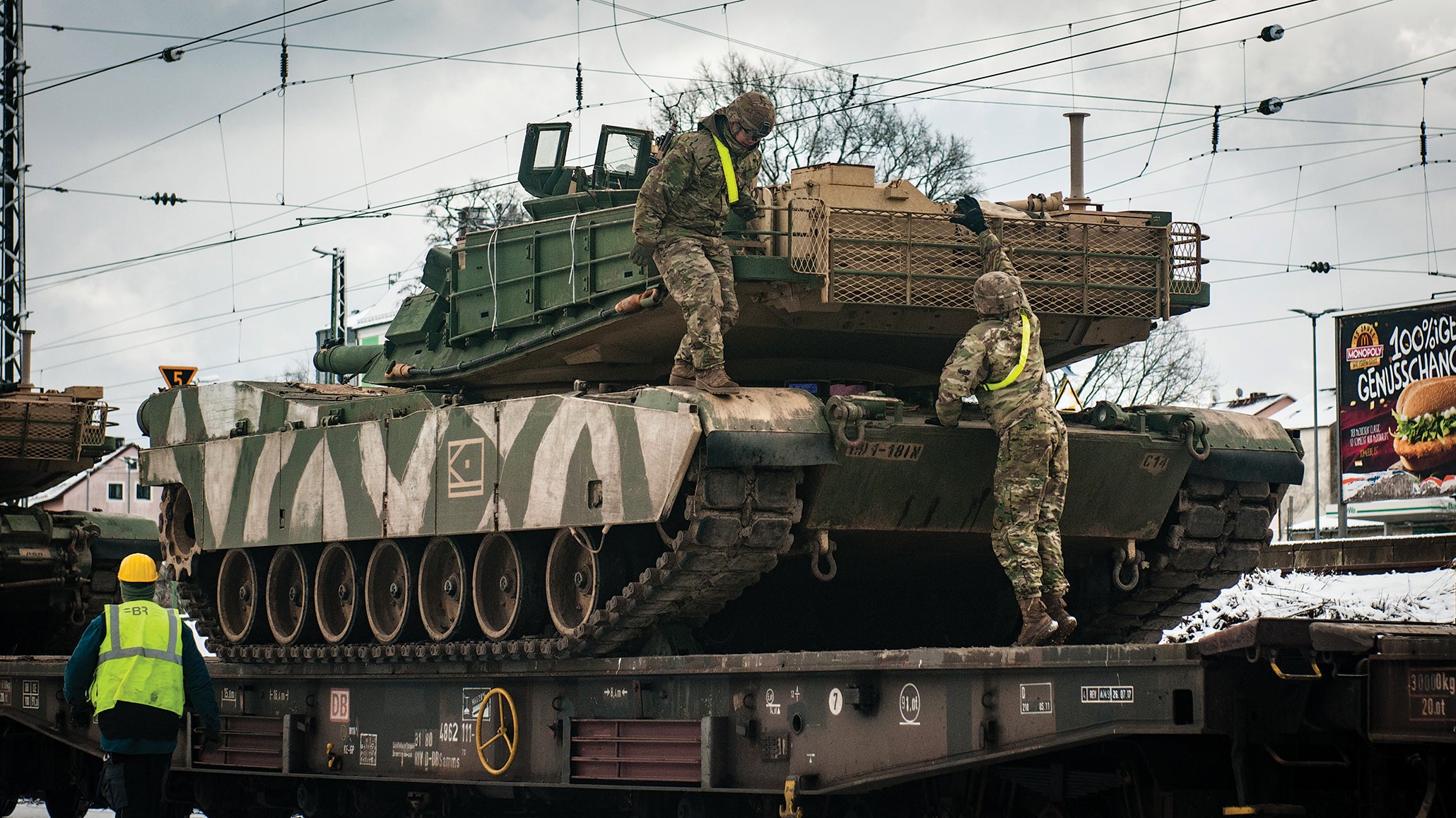Critical to the materiel enterprise’s efforts to achieve materiel readiness is long-term strategic planning with the combatant commands. The U.S. Army Materiel Command is a supporting organization—the Army’s principal logistics and sustainment command, responsible for synchronizing materiel activities across the force. As we continue to focus on materiel readiness, with Army formations that are ready to “deploy now,” we must also look ahead to the next level of readiness: mobilization and proficiency in projecting and receiving our equipment.
As the Army’s senior logistician, I challenged the materiel enterprise that we must get better—to address today’s threats and prepare for the future. I challenged my commanders to operationalize Army Materiel Command (AMC)—to think of the bigger picture, set aside who gets credit, and ensure efforts are synchronized, integrated and aligned to outputs. I challenged my staff to focus their attention and energy on only those tasks that are linked to Army priorities. I challenged logistics units in the field to overcome years of atrophied skill sets and remaster the fundamentals of materiel readiness—equipping and sustaining the force.
Hardworking leaders and logisticians throughout our ranks have made tremendous strides toward materiel readiness. Equipment-on-hand readiness rates have significantly improved, with the redistribution of millions of pieces of equipment aligned to the right locations and units. We have divested hundreds of thousands of pieces of equipment in one year alone, freeing up storage space, avoiding costs of future storage, and unburdening units Armywide from maintaining obsolete equipment. Our progress continues even as the force has grown, amidst efforts to build additional armor brigade combat teams and security force assistance brigades.
Striking a Balance
We cannot achieve materiel readiness without a responsive, efficient and disciplined supply chain. To that end, we continue to work closely with our partners at the Defense Logistics Agency and in industry to improve supply availability. We must build depth, breadth and velocity back into the supply chain. To do that, leaders and logisticians are now armed with a world-class business process and supply chain strategy that guides planning and forecasting. We must identify gaps and balance historical demands with future training and war planning to properly align supply actions and meet the needs of the force.
The configuration of Army pre-positioned stocks into combat-ready sets is also well underway. These critical sets will have the most modernized and ready equipment to allow soldiers to draw and move out. The end state in the coming years is 13 pre-positioned brigade-size sets configured for combat, ready upon issue and regionally aligned to meet theater requirements and timelines.
Our military’s strategic advantage remains our operational reach and ability to overcome the logistical difficulties inherent in projecting our forces forward. While no one organization or commander has full responsibility for the force projection process, AMC’s critical role cannot be understated. We are a key enabler of Army power projection.
Getting Mobilized
As we look to the next readiness challenge, AMC is focused on rebuilding critical capabilities and skills to quickly and efficiently support mobilization requirements. Mastering mobilization, however, is no small feat. It requires complex synchronization at home base and points of origin; across rail, air and sea; and with the Total Force in support. Our Army must be proficient at mobilizing not just for contingencies and in preparation for the next war, but for training rotations, rotational forces in theater, natural-disaster support and any other mission that may arise.
AMC operates transportation offices at home and mobilization stations, depots, arsenals, plants and ports, and manages installation deployment infrastructure requirements. AMC’s 78 Logistics Readiness centers are actively working with units to rebuild the fundamental skill sets involved in mobilizing equipment—skills like loading/unloading operations, container management, and packing, tie-down and marking of equipment at the railhead. Where operational tempo and deployment frequency mandated the outsourcing of those skills to contractors for the past 15 years, no longer can we rely on contracted support. Soldiers and units must become competent and proficient again in rail yard operations.
We must also continue to improve our processes to receive on the other end. Efficiency in offload and out-load procedures will reduce time spent out of action. When equipment arrives to the point of need, troops and units must be able to quickly and efficiently account for it, and move out and onto their missions.
Our Military Surface Deployment and Distribution Command has made great strides in this effort by improving the visibility of ship and air movements, and developing speed and efficiency in movements to and from theater. Through a global common operating picture, we can see major materiel movements worldwide. We have decreased the time by months in movement from stateside installations to overseas areas of operations. The next step is to improve visibility of delivery completion.
Our Army leadership has left no room for doubt that modernization efforts are a close-second priority to readiness. Modernization of our equipment is critical to achieving mobilization readiness. On the battlefield, we need equipment that is lighter but more lethal, agile and protective; requires less fuel but can still travel distances and power devices; and requires less routine maintenance and repair while holding up to harsh environments. Modernizing will increase the tooth-to-tail ratio, reducing the amount of logistics and sustainment support required without reducing our strategic advantage or combat effectiveness. As we achieve our goals across the Army’s six modernization priorities, our equipment will be more expeditionary and will enhance our efforts to master movements.
Transcending materiel readiness and mobilization efforts is our close relationship and collaboration with our industry partners. The defense industry has stood by our Army for more than 150 years. From developing and manufacturing equipment and parts, to the transport of equipment through air and across seas, to logistics support on the battlefield, industry is critical to U.S. dominance in war. But no longer can we operate as “business as usual.” Whether negotiating for intellectual property rights or validating strategic sourcing requirements, we must continue to open lines of communication and challenge the status quo, ensuring that both industry and the Army provide the best of what each can offer in support of the soldier on the battlefield.
More Work to Do
Materiel readiness will remain our core competency and primary focus. We cannot lose sight of ensuring our units are ready to deploy. But the next step must be getting our forces there—achieving proficiency in movement and mobilization. We must master our Army fundamentals: shoot, move, communicate, protect and sustain.
While we have made progress in synchronizing force projection—including resourcing and prioritization—across AMC and our partners in the U.S. Army Forces Command and the U.S. Transportation Command, we have more work to do. Our Army is better served, and more importantly, ready, when we can effectively, efficiently and quickly deploy our forces forward to achieve Army objectives.





